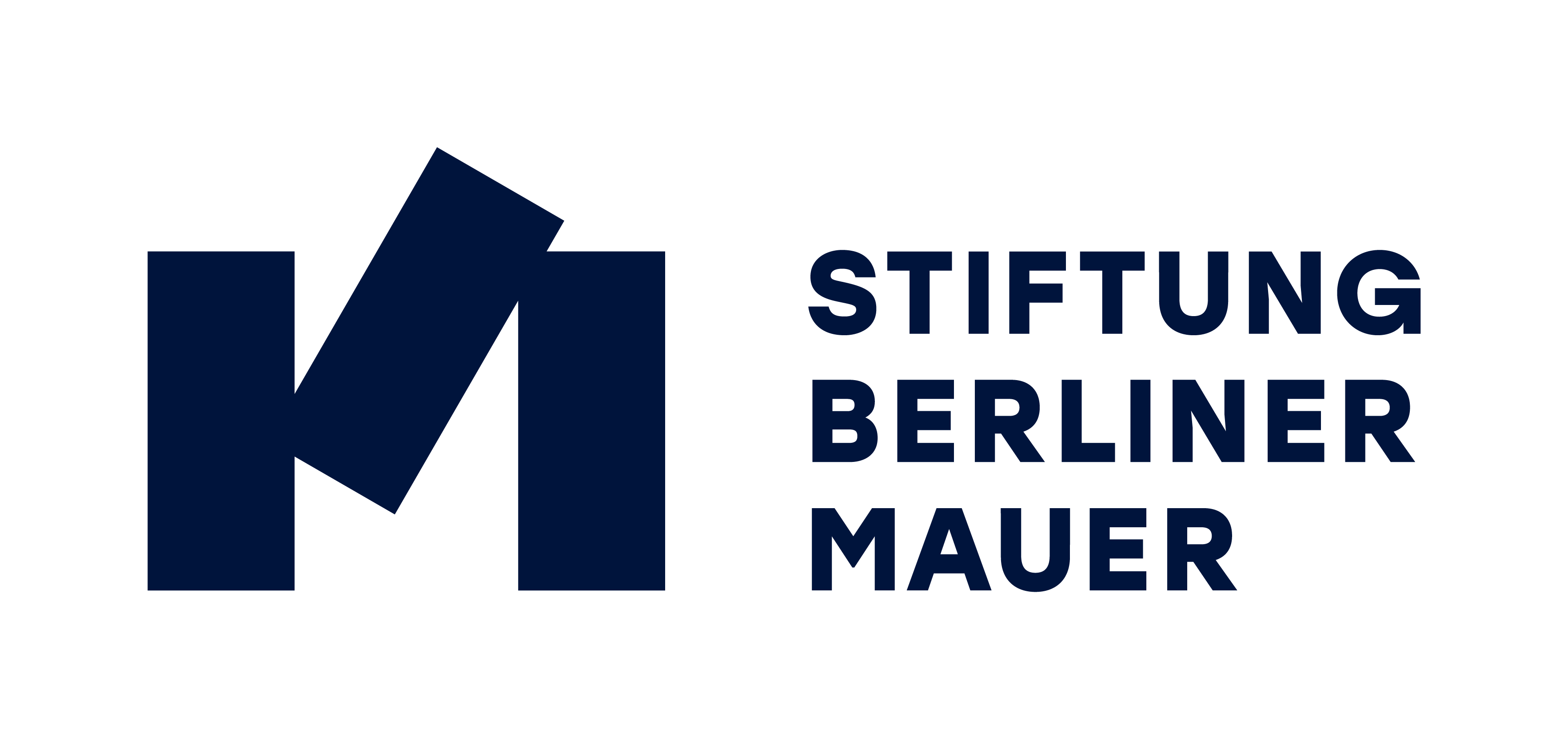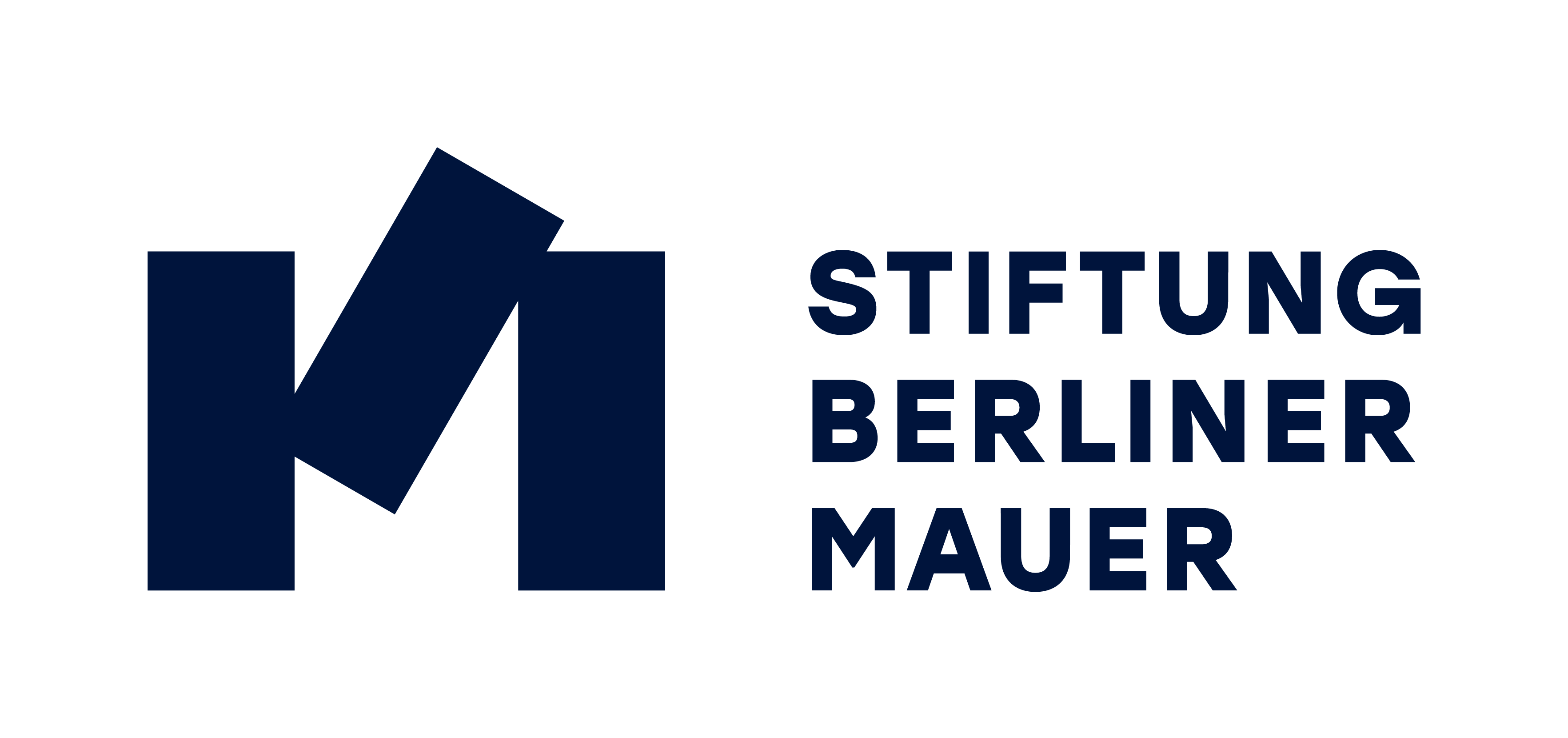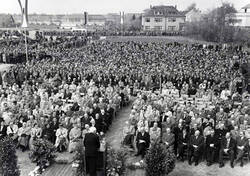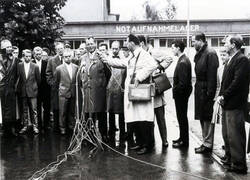Further Media
Are you in front of house number 4? There is a daycare center on the other side of the street. A historical photo in the guide shows the same building from a slightly different perspective before the white porch was built.
You might recognize the person standing on the rostrum outside the building in the picture: Ernst Reuter, then Mayor of Berlin. On April 14, 1953, he welcomed guests to the official opening ceremony. The Federal President of West Germany, Theodor Heuss, was also present and delivered the opening speech.
The presence of several well-known political figures at the ceremony and the intense media coverage it received raised the profile of the refugee center. It served West Germany not only as a place to house and care for refugees but also as a political arena. Here, the refugee movements between the two Germanies were seen in the light of global politics. The refugees from East Germany were seen as "voting with their feet"—against the socialist dictatorship in the GDR and in favor of Western democracy.
The Refugee Center in Marienfelde, known as a "gateway to freedom", remained in the public eye until 1961, when the Berlin Wall was built. This ended the mass exodus from the GDR and thus the dramatic images of overcrowding and desperation in the reception center.
After that, the reception center was no longer adequate as a symbol of division, and the public's attention shifted to The Berlin Wall, marking a new chapter of interest in the history of divided Germany.



